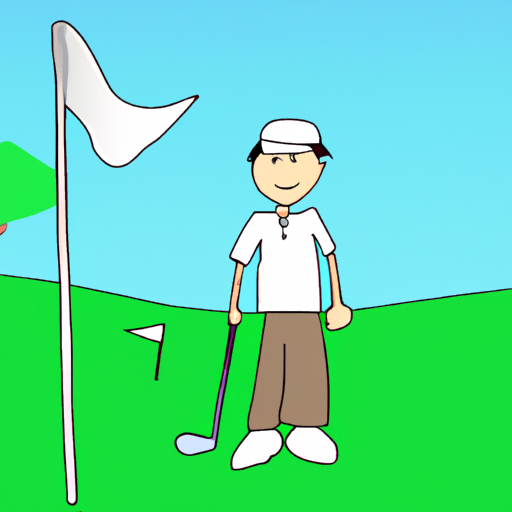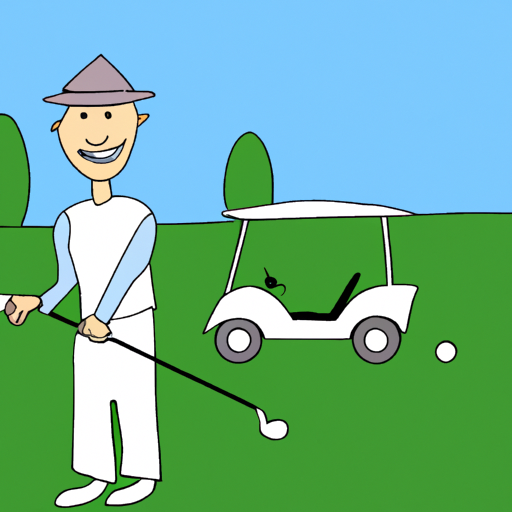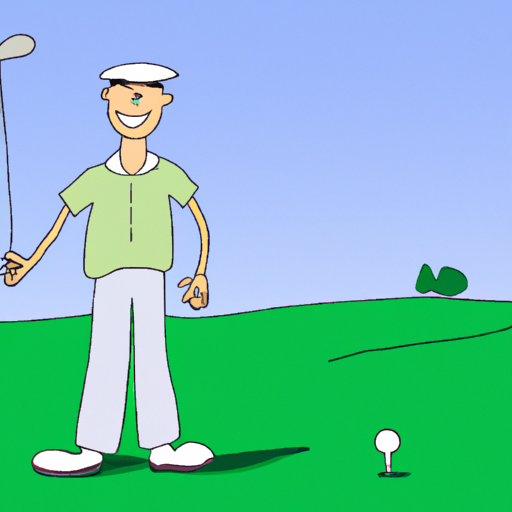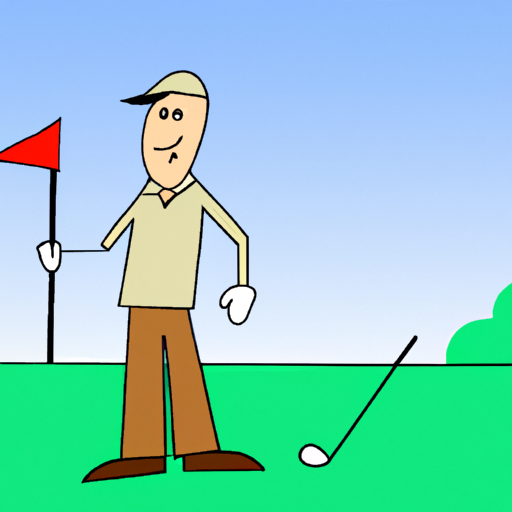- Home
- Hitting Irons
- How to Stop Shanking Irons
How to Stop Shanking Irons: A Comprehensive Guide for Golfers
Attention all golfers!
Have you ever experienced the dreaded shank? That moment when your iron connects with the ball, but instead of a beautiful arc soaring towards the green, the ball ricochets off to the side, leaving you red-faced and your scorecard in tatters.
If this sounds familiar, you're not alone.
Shanking is a common issue among golfers, from beginners to seasoned players. But fear not, there's a solution to this problem, and it's simpler than you might think.
Interest in golf has surged in recent years, with millions of new players taking up the sport. But as any golfer will tell you, the game is not just about hitting the ball; it's about precision, technique, and understanding the nuances of your swing.
That's where this guide comes in. We're going to delve into the world of shanking, exploring why it happens and, most importantly, how you can stop it from ruining your game.
Desire for improvement is a trait shared by all golfers. We all want to hit longer, straighter shots, lower our scores, and impress our buddies on the course. And let's be honest, there's nothing quite like the satisfaction of a well-struck iron shot.
But to achieve this, we need to understand and eliminate the factors that lead to shanking. This guide will provide you with the knowledge and techniques to do just that.
Action is the final step. Armed with this knowledge, it's time to hit the practice range and put these tips into action. Remember, golf is a game of patience and persistence. Improvement won't happen overnight, but with dedication and practice, you'll soon see a significant reduction in shanks and a corresponding improvement in your scores.
So, are you ready to banish the shank from your game and start hitting those sweet iron shots you've been dreaming of?
Let's get started!
 A golfer celebrating a perfect iron swing, free of shanking.
A golfer celebrating a perfect iron swing, free of shanking.What is a Golf Shank and Why is it So Dreaded Among Golfers?
Ah, the shank. Just the word alone is enough to send a shiver down the spine of any golfer. But what exactly is a shank, and why is it so feared? Let's dive into this golfing nightmare.
A shank in golf occurs when the ball strikes the hosel of the club, that is, the part where the clubhead connects to the shaft, instead of the clubface. This results in the ball shooting off at a sharp angle, typically to the right for right-handed golfers and to the left for lefties. It's an unexpected and often embarrassing mishap that can ruin an otherwise perfect round.
Now, you might be wondering, why is the shank so dreaded? Well, apart from the immediate impact on your scorecard, shanks have a way of getting into a golfer's head. They can strike without warning, and once they do, the fear of the next shank can throw off your entire game. It's a mental battle as much as a physical one.
I remember a time when I was plagued by the shank. It was during a local tournament, and I was playing well. Then, on the 7th hole, it happened. My iron shot veered wildly off course, and my confidence took a hit. For the rest of the round, the fear of shanking was at the forefront of my mind, affecting my swing and my focus.
But here's the thing: I didn't let the shank defeat me. Instead, I took it as a challenge. I sought advice from my golf instructor, studied my swing, and practiced relentlessly. It wasn't easy, and there were times when I wanted to throw my clubs in the lake, but I persisted.
Fast forward to today, and I can confidently say that I've conquered the shank. Sure, it still happens occasionally - no golfer is immune - but it no longer holds the same fear for me. I've learned to understand why it happens and how to correct it.
And the best part? My game has improved significantly. I'm hitting straighter, more accurate shots, and my scores have never been better.
So, if you're struggling with the shank, don't despair. It's a common issue that many golfers face. But with understanding, practice, and a little patience, you can overcome it.
Remember, every great golfer has faced challenges. It's how we respond to these challenges that defines us.
What are the Common Causes of Shanking in Golf?
Shanking is a common issue that plagues many golfers, but understanding why it happens is the first step towards fixing it. Here are some of the most common causes of shanking in golf:
1. Poor Address Position: The way you stand in relation to the ball can greatly influence your swing. Standing too close or too far from the ball can lead to a loss of spine angle in the downswing, causing you to shank the ball. To avoid this, ensure that your shoulders are over the middle of your feet, with your weight sitting over the balls of your feet. Let your arms hang naturally down, with about an open hand’s width between your thigh and the butt end of the club.
2. Unstable Grip: Your grip on the club can also contribute to shanking. If your grip is too light, the club may move in your hands during the swing. To check your grip pressure, place some grass on top of your left thumb and then between the butt of the club and the pad of your left hand. The grass should remain in place during the swing. If it falls, your grip pressure might be too light.
3. Swing Path: The path your club takes during your swing is another crucial factor. An ideal path comes from inside to outside the ball-to-target line. However, trying to achieve this can sometimes lead to an over-the-top golf swing, causing an out-to-in path and presenting the hosel of the club to the ball first.
4. Sliding into the Ball: The way your lower body moves during the downswing can also lead to shanking. A common issue is a lower body ‘slide’, where the knees start to move towards the target, causing the hosel to lead.
Now, knowing these common causes is one thing, but how do you fix them? But rest assured, with understanding, practice, and a little patience, you can overcome the dreaded shank.
 A golfer perfecting his swing to avoid shanking irons.
A golfer perfecting his swing to avoid shanking irons.What Drills Can I Do to Stop Shanking Irons?
Shanking irons can be a frustrating problem, but with the right drills, you can correct this issue. Here are a few drills that can help you stop shanking irons:
1. The Best Shank Fix Drill Ever: This drill is simple and can eliminate shanks very easily. It can also be used if you come over the top too much. You can watch the drill in action here:
2. The Two Ball Drill: This drill is designed for golfers whose arms move away from the body during the swing. It's a simple drill that can help you keep your arms closer to your body, reducing the chance of a shank.
3. The Obstacle Drill: This drill involves placing an obstacle just outside the toe of your golf club as you set up to a golf ball. The goal is to swing without hitting the obstacle, encouraging you to swing more from the inside. You can read more about it here.
Remember, the key to any drill is consistency. Practice these drills regularly, and you'll see improvement in your swing and a reduction in shanks.
How to Stop Shanking Irons in Golf?
Shanking irons in golf can be a frustrating problem, but it's not insurmountable. With the right approach and a few adjustments, you can eliminate shanks from your game.
One of the most effective ways to stop shanking irons is to work on your backswing. A simple adjustment in your backswing can help you cure your shanks. The key is to ensure that your club face is correctly positioned at impact. If you're looking at impact to fix your shanks, you're likely missing the problem area.
There are several drills that can help you fix your club face at impact. These drills are designed to help you understand the dynamics of your swing and how to adjust it to avoid shanks. For example, you can try the "Stop Shanking Irons with One Simple Adjustment" drill, which you can find here:
Remember, the key to eliminating shanks is understanding your swing and making the necessary adjustments. It's not about making drastic changes, but rather about fine-tuning your swing to ensure that your club face is correctly positioned at impact.
What Causes a Shank in Golf and How Can I Fix It?
I remember when I first started playing golf, I was shanking my irons left and right. It was a nightmare. I'd step up to the ball, take my swing, and then watch in horror as the ball shot off at a right angle, completely missing the fairway. It was embarrassing, to say the least. I felt like I was letting myself down, and I was letting my buddies down too. I was desperate to find a solution.
I spent hours on the driving range, trying to figure out what was going wrong. I watched videos, read articles, and even took a few lessons. But nothing seemed to work. I was about to give up when I stumbled upon an article that explained the cause of my shanks.
The article explained that shanks usually happen when your weight is too far forward - on the balls of your feet or your toes. This causes your balance to shift mid-swing, and the club head can move away from your body at impact - exposing the hosel. This was a revelation to me. I realized that I had been leaning too far over the ball during my swing, causing the club head to shift forwards, and the ball was more likely to be struck by the hosel than the center of the face - resulting in a shank.
The article suggested three simple fixes:
1. Stand taller in your setup: Many golfers lean too far over the ball at address - especially with shorter irons and wedges - causing the club head to move forwards. Instead, crouch down with a slight bend in the knees and hips, rather than leaning forwards and over the ball. This keeps you balanced, providing you with a stronger chance of finding the center of the clubface.
2. Keep weight in the middle of your feet: Many amateurs make the mistake of setting up with their weight on their toes, or the balls of their feet. Once again, this has the effect of moving the club head further away from the body, exposing the hosel and risking a shank. Instead, keep your center of mass in the middle of your feet. This gives you a solid base to perform the swing, without pushing the club head forwards and away from the body.
3. Swing around, not vertically: Usually, when you find yourself crouching too far forwards - with your weight in your toes - the resulting swing arc is too vertical. Instead, the club should swing around the body - not vertically. This swing path allows the clubface to strike the ball squarely, reducing the risk of exposing the hosel.
I started implementing these fixes, and I couldn't believe the difference it made. My shanks disappeared almost overnight. I was hitting the ball straighter and further than ever before. My buddies were shocked at my improvement. I was no longer the laughing stock of the group. I was a contender.
These days, I'm a completely different golfer. I'm confident, consistent, and I'm enjoying the game more than ever. I'm not afraid to step up to the first tee. I'm not worried about humiliating myself. I'm just excited to play the game I love.
So, if you're struggling with shanks, don't despair. Try these simple fixes. Stand taller, keep your weight in the middle of your feet, and swing around, not vertically. You might just find that it makes all the difference. I know it did for me.
And remember, golf is a journey. It's not about being perfect. It's about improving, learning, and enjoying the game. So keep at it, keep learning, and keep enjoying the game. You've got this!
So, are you ready to banish those shanks once and for all? Let's do this!
 A golfer practicing his swing to avoid shanking irons.
A golfer practicing his swing to avoid shanking irons.Key Takeaways To Stop Shanking Your Irons
1. Stand Taller in Your Setup: Don't lean too far over the ball. Instead, crouch down with a slight bend in the knees and hips. This keeps you balanced and increases the chance of finding the center of the clubface.
2. Keep Weight in the Middle of Your Feet: Avoid setting up with your weight on your toes or the balls of your feet. Keep your center of mass in the middle of your feet for a solid base during your swing.
3 .Swing Around, Not Vertically: Your club should swing around your body, not vertically. This swing path allows the clubface to strike the ball squarely, reducing the risk of exposing the hosel.
Now, let me share a personal anecdote.
I remember a time when I was playing in a local tournament. I was on the 18th hole, and I had a chance to win. I was nervous, and I let it get to me. I shanked my iron shot into the water. I was devastated.
But instead of letting it get me down, I used it as motivation. I went back to the drawing board, worked on my swing, and implemented the fixes I mentioned above. The next time I played in a tournament, I was confident and ready.
And guess what?. It was a great feeling, and it was all thanks to the lessons I learned from my mistakes.
I encourage all of you to share your stories with us in the Golfeaser community. We all have our ups and downs, our triumphs and our failures. But it's how we learn from them that truly defines us as golfers.
So, don't be shy. Share your stories, your tips, and your experiences. We're all here to learn and grow together.
And don't forget to sign up for our newsletter. We'll keep you updated with the latest tips, tricks, and advice to help you improve your game. Plus, you'll be part of a community of golfers who are all striving to live by the Golfeaser Manifesto.
We're all weekend golfers, and we're all on a journey to improve our game, hit long drives, impress our buddies, earn our bragging rights, and change the world, one round at a time.
So, are you ready to join us?
Let's do this, together!
Everything You Need to Know About How to Stop Shanking Irons
Why have I started shanking?
Why have I started shanking?
Shanking often starts when your swing path gets out of alignment. This could be due to a variety of factors, such as poor posture, incorrect grip, or even just a lack of focus. It's important to identify the root cause and address it to stop the shanks.
How do I stop my irons and wedges from shanking?
How do I stop my irons and wedges from shanking?
The key to stopping your irons and wedges from shanking is to ensure your swing path and clubface alignment are correct. This involves maintaining a proper stance, grip, and swing plane. Regular practice and possibly some professional instruction can help you correct these issues.
How do I stop shanking the ball?
How do I stop shanking the ball?
Stopping the shank involves correcting your swing mechanics. This includes ensuring your weight is evenly distributed during your swing, your grip is firm but not too tight, and your swing path is straight and consistent. Regular practice and patience are key.
How do I stop hitting the hosel with irons?
How do I stop hitting the hosel with irons?
Hitting the hosel with your irons is a common cause of shanks. To stop this, you need to ensure your clubface is square at impact and your swing path is not too inside-out. Practicing with an awareness of where your club is making contact with the ball can help.
Why am I shanking my irons all of a sudden?
Why am I shanking my irons all of a sudden?
Sudden shanks with your irons could be due to a change in your swing mechanics, such as a shift in your weight distribution or a change in your grip. It could also be a mental issue, such as loss of focus or increased pressure. Identifying the cause is the first step to fixing the problem.
What is the simple cure for the shanks?
What is the simple cure for the shanks?
The simple cure for the shanks is to correct your swing mechanics. This involves ensuring your stance, grip, and swing path are correct. Regular practice with a focus on these areas can help you eliminate the shanks.
How do I stop shanking wedges?
How do I stop shanking wedges?
To stop shanking your wedges, you need to focus on striking the ball more towards the toe of the club, avoiding the heel and hosel. This could be due to a too inside-out swing path or a setup that's too close to the ball. Making these adjustments can help you stop shanking your wedges.
How do I stop shanking the golf ball?
How do I stop shanking the golf ball?
Stopping the shank involves correcting your swing mechanics. This includes ensuring your weight is evenly distributed during your swing, your grip is firm but not too tight, and your swing path is straight and consistent. Regular practice and patience are key.
Why am I shanking my wedges?
Why am I shanking my wedges?
Shanking your wedges could be due to a variety of factors, such as a poor setup, an inside-out swing path, or hitting the ball with the hosel of the club. Identifying and correcting these issues can help you stop shanking your wedges.
What is the golf shank slow motion?
What is the golf shank slow motion?
The golf shank in slow motion is a tool used to analyze and correct a shank. By slowing down the swing, you can see exactly where and when the swing is going wrong, such as if the club is coming too far inside on the downswing or if the clubface is open at impact. This can be a valuable tool in correcting the shank.










